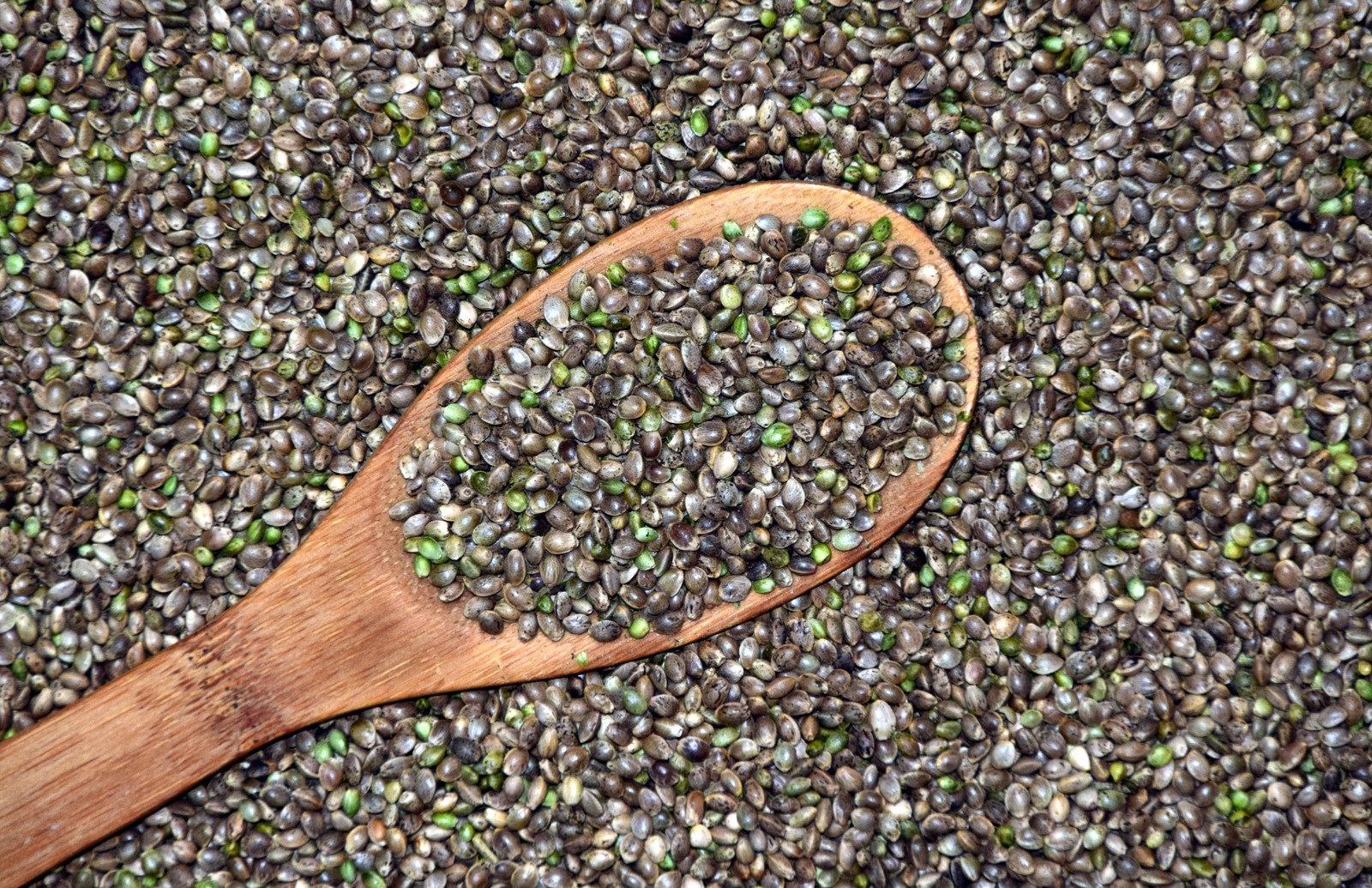
Specific European and national legislation as well as international conventions apply to establish which type of extracts and derivates of the Cannabis sativa L. plant may be used in products, including food and cosmetics. Keep reading to find out more about hemp, an incresingly popular ingredient in cosmetics, and the differences in the extracts and derivates of the Cannabis sativa L. plant.
What is hemp?
Hemp is a variety of Cannabis sativa L. Hemp is a dioecious plant, which means that it can be separated into male and female plants. In hemp fields, there is usually a concentration of female hemp and sporadic placed males to pollinate the females and produce nutrient-rich seeds. Hemp has been used for over 10,000 years to make paper and fibres for clothing and fabric, but also in cosmetic products, particularly as an oil but also as other extracts and derivatives.
What is the difference between hemp, CBD and marijuana?
The Cannabis plant contains over 80 biologically active chemical compounds (cannabinoids). However, the most known ones are delta-9-tetrahydrocannabinol (THC) and cannabidiol (CBD). Different taxonomic classifications of the genus Cannabis vary in their THC and CBD content. For example, Cannabis indica originally from India contains a high THC content associated with marijuana hashish production, whereas Cannabis sativa L. from Europe and western Eurasia has a high CBD content, traditionally associated with the textile industry, and more recently to applications within the cosmetic, food and pharmaceutical sectors. Unlike THC, CBD has no psychoactive effects.
Marijuana and CBD are not the same even if they both come from the same plant. CBD is a single, isolated compound in the cannabis plant, while marijuana contains many naturally occurring compounds, including THC and CBD. Hemp seed oil, extracted from the seeds of Cannabis sativa L., Cannabaceae, has next to no THC or CBD.
How is hemp used in cosmetics and what are its properties?
There are several types of extract from hemp used in cosmetics:
- Cannabis Sativa Seed Oil (Hemp seed oil): it is extracted by cold-pressing hemp seeds. Hemp oil is rich in properties that makes it a very effective moisturizer functioning as an emollient to soften and smoothen the skin. Hemp seed oil is high in essential fatty acids (omegas 3 and 6), polyunsaturated fatty acids (PUFAs) and other nutrients that keep the skin in a good condition. Due to its cosmetic properties, hemp seed oil can be found in products such as soaps, shampoos, lip balms, hand creams and massage oils.
- Cannabis Sativa Seed Water: it is the aromatic water resulting from the steam distillation from hemp seeds. Hemp hydrosols are used as a base ingredient for face creams due to their moisturizing effect. Aside from skin conditioning, they can be used as well in hair products to condition the appearance and feel of the hair.
Other raw materials from hemp include by-products from production of hemp seed oil such as Cannabis Sativa Seedcake powder and Cannabis Sativa Seedcake, which may be used as abrasives, as well as derivatives such as Potassium Hempseedate, which can be found in soaps and handwashes, and Ethyl Cannabis Seedate, which may be used as a naturally derived Cyclopentasiloxane (D5) substitute.
Can cannabidiol (CBD) be used in cosmetics?
Cannabidiol (CBD) is a type of cannabinoid that can be synthetically produced or isolated from Cannabis plants and used as a single ingredient. In cosmetics, CBD can function as an antioxidant and facilitate anti-aging properties.
To this date, cosmetic regulatory compliance of CBD as an ingredient itself relies on the part of the plant from which it is extracted. For instance, seeds when not accompanied by tops are acceptable, although these do not contain CBD, whereas CBD prepared from Cannabis extracts or tinctures from flower/fruiting tops where the resin has not been separated, as well as the separated resin, are not allowed for use. Indeed, the UN 1961 Single Convention on Narcotic Drugs defines controlled cannabis as “the flowering or fruiting tops of the cannabis plant”, but does not consider Cannabis sativa seeds or leaves as controlled substances (as long as they are not accompanied by the tops).
In this context, Regulation (EC) No. 1223/2009 for cosmetics bans the use of CBD derived from resin, tinctures and extracts of Cannabis, as well as cannabinoids, resin and various extracts (e.g. Cannabis Sativa flower extract, Cannabis Sativa flower/leaf/stem extract) from cosmetic use (Annex II). Synthetically produced CBD is acceptable for end use.
How about detectable THC levels in cosmetics?
Under Regulation (EU) No. 1308/2013, Cannabis sativa L. is considered as an agricultural product and as an “industrial plant” that may be grown legally as long as their THC content does not exceed 0.2%. However, for cosmetics, national legislations from EU Member States on controlled substances may apply. For instance, in France no THC is allowed, while in Luxembourg a THC concentration up to 0.3% is permitted.
How does regulation work outside the EU?
In the USA, the US Food and Drug Administration (FDA) does not prohibit or restrict the use of cannabis or cannabis-derived ingredients in cosmetics, and considers the possibility that a product containing these substances can have both a cosmetic and a drug use (for instance, creams to treat dermatitis or acne). Unlike in the USA, however, no therapeutic or medical claim should be asserted for cosmetics in Europe. This applies as well to products containing permitted cosmetic raw materials extracted from Cannabis sativa.
Transparency and traceability
Following baseline regulatory compliance, for the formulation and subsequent claims made about natural and organic cosmetics, transparency and traceability are key to ensure that any substance extracted or derived from hemp used in a product ensures certain verifiable qualities. When using raw materials from Cannabis in cosmetics, brands should choose reliable supply chains that give proof of the traceability of these plant extracts from crop-to-shop. This is a key aspect for regulatory compliance but also for end consumers because it reassures them about the origin and qualities of these substances when used in a cosmetic product.
 Article by Ana Ledesma, Communications Officer at NATRUE
Article by Ana Ledesma, Communications Officer at NATRUE
